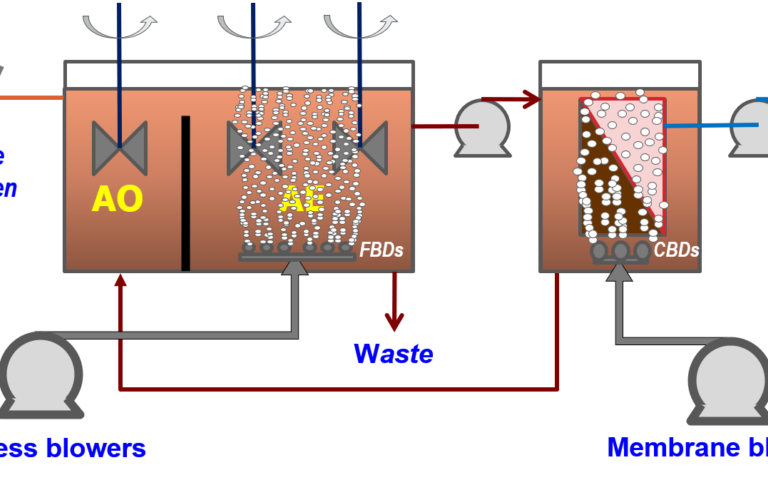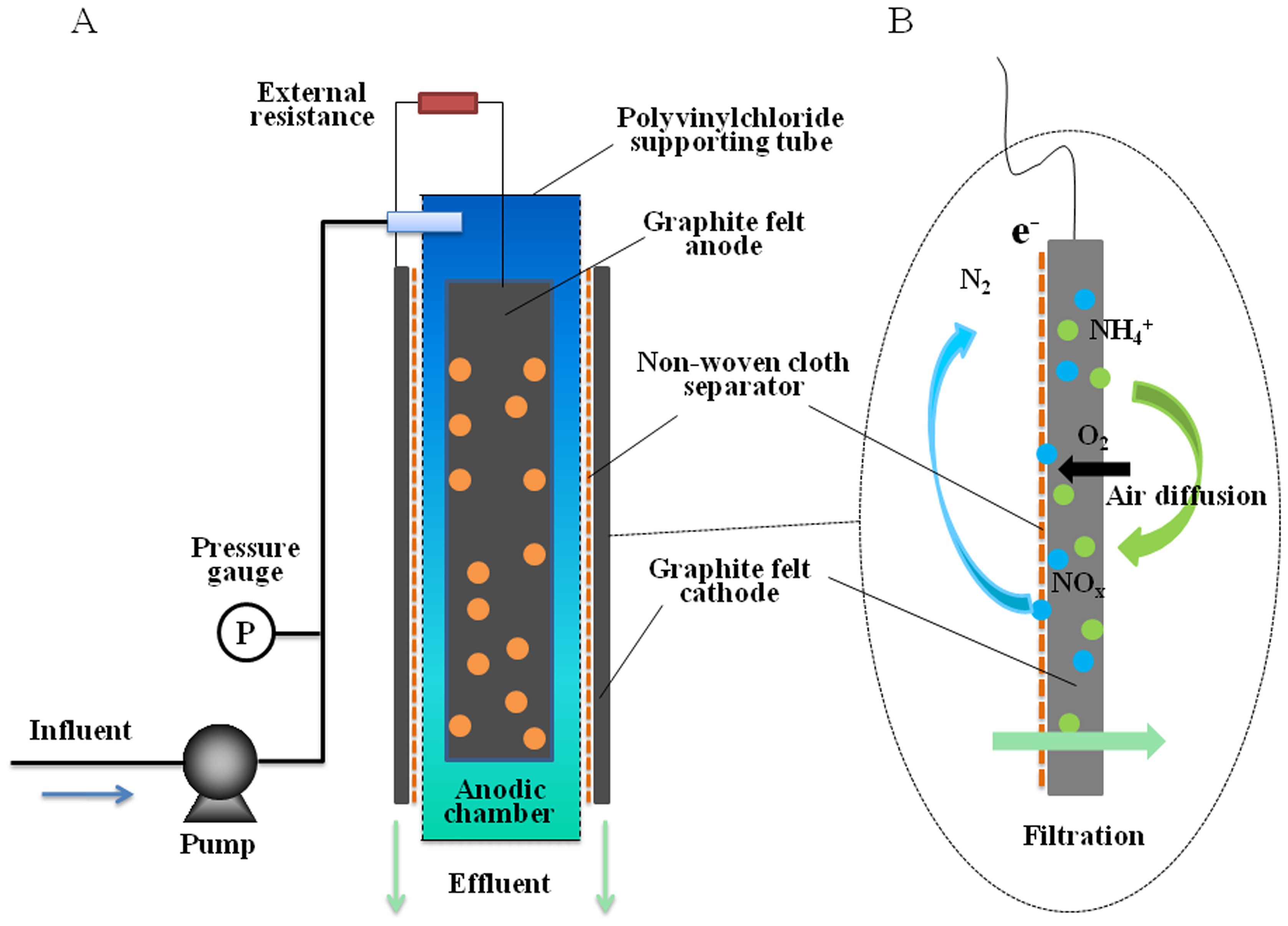Troubleshooting Common Issues with Membrane Bioreactor Systems
Troubleshooting Common Issues with Membrane Bioreactor Systems
Blog Article
Membrane Layer Bioreactors Clarified: Reliable Solutions for Tidy Water
Membrane layer bioreactors (MBRs) have actually arised as a sophisticated solution for addressing the pushing challenges of wastewater therapy - Membrane Bioreactor. By incorporating organic procedures with sophisticated membrane layer filtration, MBRs not just enhance the high quality of cured water yet also minimize the spatial requirements of treatment centers.

What Are Membrane Bioreactors?
Membrane layer bioreactors (MBRs) are innovative wastewater treatment systems that integrate biological deterioration procedures with membrane purification technology. This combination permits the efficient elimination of pollutants from water, making MBRs a recommended option in different applications, including community wastewater therapy and industrial effluent administration.

Among the vital benefits of MBRs is their ability to create top quality effluent, typically suitable for reuse in irrigation or industrial procedures. In addition, MBRs call for a smaller sized footprint contrasted to conventional therapy systems, making them ideal for metropolitan setups where room may be restricted.
Furthermore, MBRs can properly manage varying influent lots and are less susceptible to the impacts of hazardous shocks. These attributes contribute to their growing appeal as a sustainable option for resolving the raising demand for tidy water while minimizing ecological influences.
Just How Membrane Bioreactors Job
While the operation of membrane layer bioreactors (MBRs) may appear facility, it essentially rotates around the harmony between organic processes and membrane purification. MBRs integrate a biological therapy process, usually turned on sludge, with a membrane layer separation system to treat wastewater effectively.
In an MBR system, wastewater is very first presented into a bioreactor where microorganisms break down raw material and various other pollutants. The biological activity minimizes the focus of toxins while promoting the development of biomass. Following this biological therapy, the mixed alcohol is subjected to membrane filtration, which can be microfiltration or ultrafiltration, relying on the desired effluent top quality.
The membrane layers work as a physical obstacle, permitting water and tiny solutes to pass while preserving put on hold solids and bigger particles. This enables the system to keep a high focus of biomass within the activator, improving the treatment performance.
Moreover, the constant splitting up of treated water from the biomass helps with a small style and decreases the footprint of the treatment facility. Generally, the combination of organic degradation and membrane layer purification in MBRs leads to trusted and reliable wastewater treatment, making certain high-quality effluent appropriate for numerous applications.
Advantages of MBR Technology
Among the essential advantages of membrane bioreactor (MBR) technology is its capacity to generate premium effluent with a substantially reduced impact compared to traditional wastewater treatment techniques. MBR systems efficiently integrate biological treatment and membrane layer purification, resulting in premium removal of contaminants, including put on hold solids, microorganisms, and raw material. This ability causes effluent that commonly fulfills or goes beyond stringent regulative standards for reuse and discharge.
In addition, MBR modern technology enables greater biomass focus, which boosts the treatment performance and lowers the called for reactor volume. This compact design is particularly valuable in city locations where space is limited. The operational flexibility of MBR systems also indicates they can adapt to varying influent top qualities and circulation rates, making them suitable for a large array of applications.
Additionally, the minimized sludge production related to MBR procedures adds to decrease operational and maintenance costs. The membranes work as a physical obstacle, lessening the danger of obstructing and making it possible for longer functional durations in between cleaning. On the whole, the advantages of MBR innovation make it an appealing solution for lasting wastewater therapy, addressing both ecological worries and the requirement for reliable source monitoring.
Applications of Membrane Bioreactors
With their adaptability and effectiveness, membrane bioreactors (MBRs) locate applications across numerous industries, including metropolitan wastewater therapy, industrial processes, and also water recovery. In municipal settings, MBRs supply a portable option for treating wastewater, efficiently eliminating you could try these out impurities while concurrently producing premium effluent that meets rigid regulative standards. This makes them especially appropriate for locations with minimal space.
In industrial applications, MBR technology is made use of for dealing with procedure water, especially in markets such as food and drink, pharmaceuticals, and petrochemicals. These sectors gain from MBRs' capacity to manage high organic loads and their efficiency in recouping beneficial resources from wastewater, such as nutrients and water.
Additionally, MBRs play a critical duty in water improvement campaigns, enabling the reuse of dealt with wastewater for watering, industrial procedures, and even as potable water after further treatment (Membrane Bioreactor). Their performance in getting rid of pathogens and contaminants makes them a dependable option for making sure water top quality in various reuse applications
Future of Water Treatment Solutions
The future of water therapy remedies is poised for transformative innovations driven by technological innovation and boosting environmental recognition. As global water scarcity becomes a pressing issue, new methodologies, consisting of membrane bioreactor (MBR) systems, are established to play a crucial duty in enhancing the performance and sustainability of water therapy processes.
Arising modern technologies such as expert system and artificial intelligence are expected to optimize treatment operations, permitting for real-time monitoring and anticipating upkeep. This will enhance the total integrity and performance of water therapy centers. Additionally, innovations in membrane layer materials, such as graphene and nanofiltration, assure to raise permeation prices and lower fouling, leading to lower power consumption and operational expenses.
Furthermore, the combination of eco-friendly power resources into water therapy plants will certainly add to greener practices. The circular economic climate version will certainly likewise obtain traction, motivating the recovery of important sources from wastewater, such as nutrients and energy.
Final Thought

Membrane layer bioreactors (MBRs) have arised as a sophisticated remedy for addressing the pushing obstacles of wastewater therapy. By integrating organic procedures with Click This Link sophisticated membrane purification, MBRs not just boost the high quality of treated water but likewise minimize the spatial demands of therapy facilities.One of the key advantages of membrane bioreactor (MBR) technology is its capability to create premium effluent with a substantially lowered impact compared to standard wastewater treatment techniques.With their convenience and performance, membrane layer bioreactors (MBRs) locate applications across numerous fields, consisting of community wastewater treatment, industrial procedures, and also water recovery.In conclusion, membrane layer bioreactors stand for a substantial advancement in wastewater therapy modern technology, integrating biological processes with effective membrane filtering to produce high-grade effluent.
Report this page